What Are The Basic Types And Goals Of Supervised Visitation?
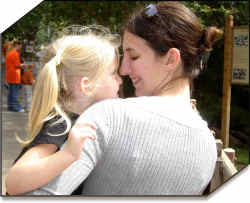 Supervised child visitation can be indicated in cases involving custody; shared parenting; grandparent custody or visitation; divorce; legal separation; post-decree matters; emergency custody situations; abuse/neglect/dependency cases; concerns about parental abduction; and, reintroduction of a parent after a long absence.
Supervised child visitation can be indicated in cases involving custody; shared parenting; grandparent custody or visitation; divorce; legal separation; post-decree matters; emergency custody situations; abuse/neglect/dependency cases; concerns about parental abduction; and, reintroduction of a parent after a long absence.
Child visitation can be restricted or denied if a court finds that allowing regular visitation would endanger a child’s physical or emotional health. In numerous situations, courts may order child visitation by stipulating how often visits are to occur, with whom, and whether the visits are to be supervised by a human services employee or some other responsible adult. If there are protection and safety concerns the visits are supervised.
Such supervised visits also provide an opportunity for workers to observe and document parent-child interactions.
Types and Goals of Supervised Visitation
In many states there are three basic types of supervised visitation providers: volunteers, paid professionals, or paid therapeutic providers. The latter two categories may include department of human services employees or their contractors. Their role is to protect the integrity of the visit and to provide a positive atmosphere where a parent and child can interact in a safe, structured … Read More... “Supervised Visitation and the Role of Human Service Departments”


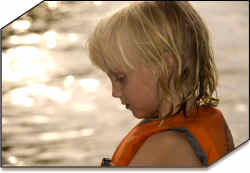 The key role of the child protective services (CPS) investigator is to determine if a child is at risk of harm. When a child is in immediate danger, CPS and/or law enforcement work to ensure the child’s safety. Often a safety plan is developed which will keep a child safe at home. When that is not possible the child may be taken into protective supervision.
The key role of the child protective services (CPS) investigator is to determine if a child is at risk of harm. When a child is in immediate danger, CPS and/or law enforcement work to ensure the child’s safety. Often a safety plan is developed which will keep a child safe at home. When that is not possible the child may be taken into protective supervision.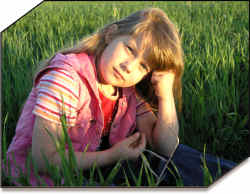 The Jerry Sandusky criminal trial is over; the civil lawsuits are in active settlement mode. Undoubtedly, the entire country is more tuned into child abuse than it ever was. The National Conference of State Legislatures reports that about 105 bills on the reporting of suspected child abuse and neglect have been introduced in 2012 legislative sessions in 30 states and the District of Columbia. All of them include a penalty for failing to report suspected child abuse.
The Jerry Sandusky criminal trial is over; the civil lawsuits are in active settlement mode. Undoubtedly, the entire country is more tuned into child abuse than it ever was. The National Conference of State Legislatures reports that about 105 bills on the reporting of suspected child abuse and neglect have been introduced in 2012 legislative sessions in 30 states and the District of Columbia. All of them include a penalty for failing to report suspected child abuse. A recent study identifies the nation’s most dangerous traffic intersection. It’s at Flamingo Road and Pines Boulevard in Pembroke Pines, Florida. The insurance company’s engineer who compiled the report notes that the intersection meets appropriate design standards and is regulated by traffic lights. He said traffic volume and driver error were two important factors in the high number of crashes.
A recent study identifies the nation’s most dangerous traffic intersection. It’s at Flamingo Road and Pines Boulevard in Pembroke Pines, Florida. The insurance company’s engineer who compiled the report notes that the intersection meets appropriate design standards and is regulated by traffic lights. He said traffic volume and driver error were two important factors in the high number of crashes. Water. It can be so much fun, but oh so dangerous. The National Safe Kids Campaign (2004) reports that “drowning is the second leading cause of unintentional injury-related death among children ages 1–14 and the leading cause of unintentional injury-related death among children ages 1–4. The majority of drownings and near-drownings occur in residential swimming pools and in open water sites.” Furthermore, in 2004, “approximately 2,300 children ages 14 and under died from unintentional injuries that occurred in the home. Nearly 80 percent of these deaths were among children ages 4 and under.”
Water. It can be so much fun, but oh so dangerous. The National Safe Kids Campaign (2004) reports that “drowning is the second leading cause of unintentional injury-related death among children ages 1–14 and the leading cause of unintentional injury-related death among children ages 1–4. The majority of drownings and near-drownings occur in residential swimming pools and in open water sites.” Furthermore, in 2004, “approximately 2,300 children ages 14 and under died from unintentional injuries that occurred in the home. Nearly 80 percent of these deaths were among children ages 4 and under.”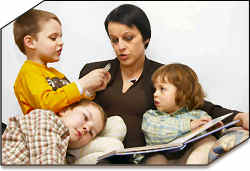 Any family law attorney, judge, or child custody expert will tell us that, except in unusual circumstances, during and following a divorce it is desirable for a child to have a strong relationship with both parents. It follows that the less contentious the divorce the better off are the children, the parents, and the department in charge of child support issues. Indeed, custody and support issues can unravel what might otherwise be an amicable divorce. One of the major problems that may arise after divorce is custodial interference with visitation. Many jurisdictions, including Ohio, have held that unreasonable interference with the noncustodial parent’s parental rights can even be grounds for a change of custody.
Any family law attorney, judge, or child custody expert will tell us that, except in unusual circumstances, during and following a divorce it is desirable for a child to have a strong relationship with both parents. It follows that the less contentious the divorce the better off are the children, the parents, and the department in charge of child support issues. Indeed, custody and support issues can unravel what might otherwise be an amicable divorce. One of the major problems that may arise after divorce is custodial interference with visitation. Many jurisdictions, including Ohio, have held that unreasonable interference with the noncustodial parent’s parental rights can even be grounds for a change of custody.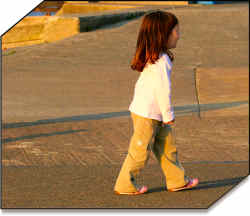 The National Runaway Switchboard reports that between 1.6 and 2.8 million youth run away each year. It also reports that there has been “a significant increase in the number of crisis calls identifying abuse or neglect as a reason for the call, with abuse calls up 33 percent and neglect calls up 54 percent between 2005-2008″ (National Runaway Switchboard Crisis Caller Trends, 2009, p. 2).
The National Runaway Switchboard reports that between 1.6 and 2.8 million youth run away each year. It also reports that there has been “a significant increase in the number of crisis calls identifying abuse or neglect as a reason for the call, with abuse calls up 33 percent and neglect calls up 54 percent between 2005-2008″ (National Runaway Switchboard Crisis Caller Trends, 2009, p. 2).